Mold.
The mere mention of the word evokes images enough to make your skin crawl: green blotches on your sandwich bread or the stench of curdled milk.
But when your home is infested with mold, the evidence may not be so visible.
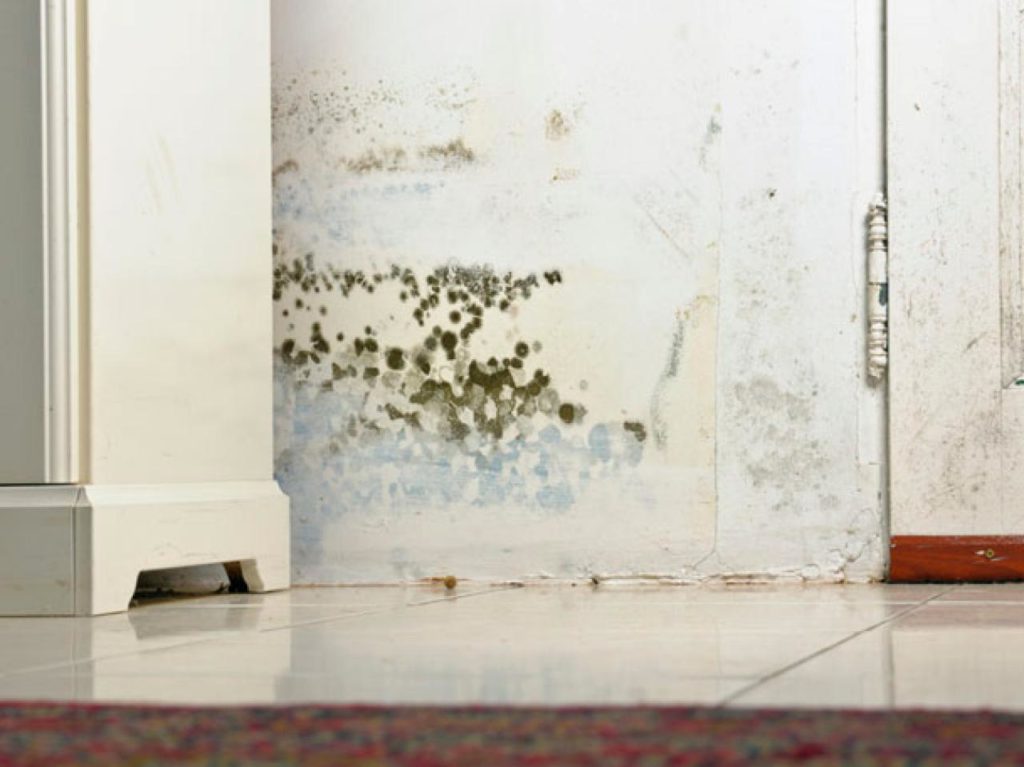
Even the most spotless, sparkling-clean homes can still have mold lurking in unexpected places.
According to the EPA (Environment Protection Agency), mold can sprout on any surface in the household, including hardwood, papers, carpeting, and food. Its appearance varies based on the species and surface it has sprung upon.
Mold comes in purple, orange, green, black or white producing tiny, microscopic spores that float through the air. If left unchecked and untreated, mold can quickly multiply and develop colonies causing both health complications for your family and permanent structural damage to your home.
Feeling uneasy? Don’t! After reading this article, you’ll learn 11 warning signs mold is lurking in your home and how to resolve the situation if it occurs.
Early Signs of a Mold Problem in Your Home
1. Rotting Smell
Is there a damp, moldy odor coming from your flooring or walls reminding you of old books? ” Mold volatile organic compounds (MVOCs)”, or molecules produced during the mold life cycle, may be responsible for the stench. It’s a telltale sign you have a mold problem in your home.
2. Spotted Clothes
Check for white or black patches on your clothing that are fluffy or slimy to the touch. This could be a sign of a deeper mold infestation in the household.
Easy tip: Toss dirty garments into the washing machine right away. Mold thrives in damp clothing stored in poorly ventilated areas
3. Contaminated Carpets
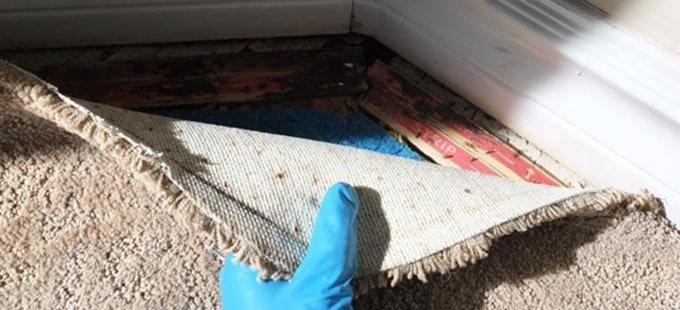
Mold flourishes in carpeted areas and rugs, a perfect breeding ground for mold in the home. Keep a close eye out for any spots, odors, or staining on the carpet.
Check both sides of the carpet and padding if you notice anything unusual.
Easy tip: Getting your carpets and rugs professionally cleaned a few times a year is an ideal way to detect and avoid this issue!
4. Water Heater Hideaway
Mold thrives in damp parts of the house, like the water heater closet. Water heaters are typically installed in tough-to-reach parts of the home so leaks can go unnoticed and remain tricky to detect Look for dampness on the floor and walls surrounding the heater frequently to prevent a mold infestation created by a leaking water tank.
5. Asthma or Allergic Flare-Ups
Several mold species produce a toxic chemical substance called mycotoxin, which can trigger respiratory problems in people with asthma and allergies (and really anyone else, for that matter). Have you ever started sneezing, coughing, blowing your nose, or feeling fatigued regardless of the weather? It might be time for a comprehensive home inspection.
6. Furniture with Fungus
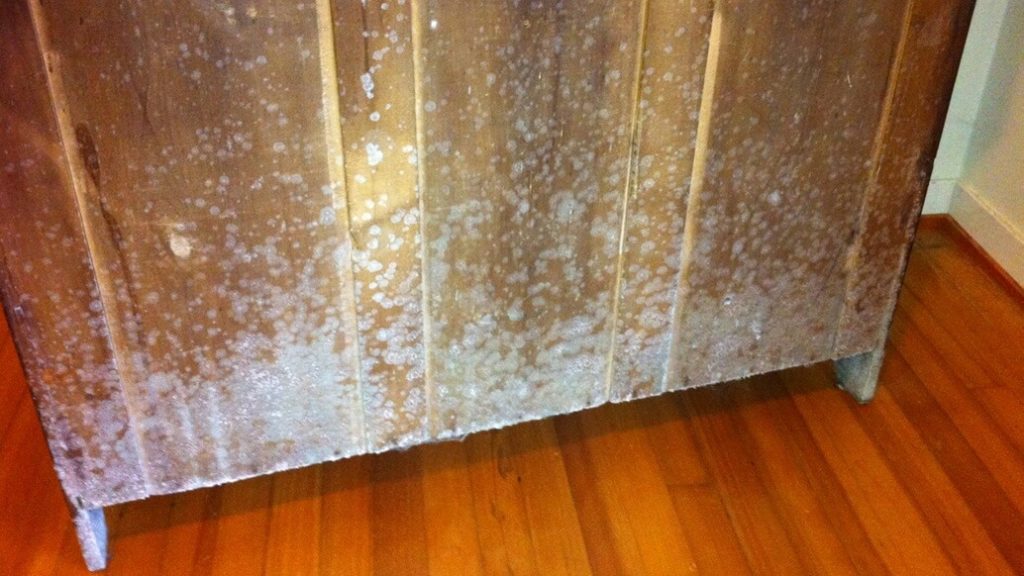
Mold particles are more likely to persist in absorbent materials like upholstered furniture and foam, because they’re receptive to moist leather and wood. Look closely at the fibres of your furniture on a regular basis for discoloration, fuzz, or spores
7. Distorted Walls
Mold generating moisture is among the most common causes of paint blistering and wallpaper warping. If your walls look deformed, identify the source of moisture like a nearby leaking windowsill, and tackle the issue before it becomes a mold hazard
8. Persistent Cold or Cough
Have you been battling with a congestion that simply won’t go away? Mold exposure can aggravate respiratory disorders like persistent or recurring pneumonia and bronchitis.
The first line of defense is to get treatment from your doctor and rule out any underlying conditions. If you have any other indications of a mold infestation in your house, have it addressed by professionals promptl
9. Funky AC Filters
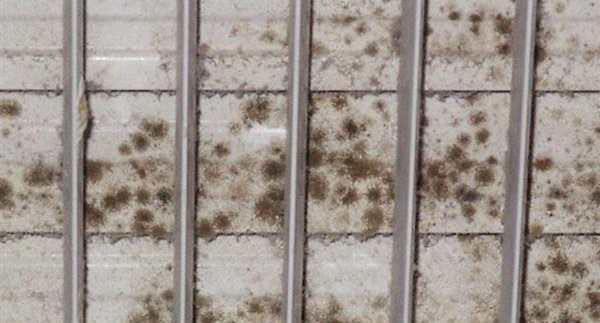
When you turn on your stand-alone air conditioning unit, does it produce a foul smell? Do you notice any black, fuzzy spots on the filtration system? If so, it’s likely black mold.
It’s important to install HEPA (high-efficiency particulate air) filters. Clean the unit on a regular basis and replace the filters to deprive mold of its food sources: moisture and dust
10. Tarnished Tiles
Seeing any visible gunk in the backfill of your tiles? If so, this suggests the presence of mold and mildew. To prevent this issue, remove water from the bathtub and sidewalls with a sponge after showering or bathing. Avoid storing damp towels and clothes in the laundry hamper and clean your shower curtain promptly if it becomes discolored.
11. Previous Water Damage
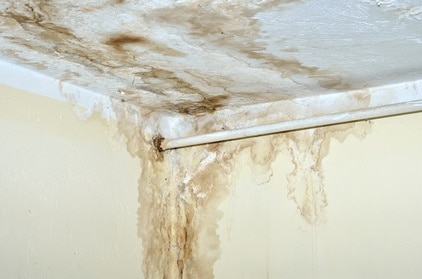
Have you ever had the misfortune of uncovering water damage in your home? Like flooding or a burst pipe?
Mold development is likely to occur if the water was not drained efficiently and properly. Water damage often contributes to mold problems, which can be pricey and can potentially destroy the structural integrity of your house since fungus thrives on moisture.
Based on the EPA’s recommendation, there’s no simple solution to completely remove mold from a home. So it’s essential to , be on the lookout for potential issues.
If you experience any of the above warning signals, be sure to eliminate mold colonies thoroughly before they compound and multiply.
Trust the Experts. Trust MoldGone.
Our highly trained, certified mold removal professionals follow a proven, step-by-step process to make your home or business safe again. The moment you notice mold, you must act. Even a small amount of mold in the home can multiply quickly, and it’s entirely possible there is more existing mold than what meets the eye.
If you suspect mold in your DC area home and are interested in its removal, call MoldGone at 301.873.9164 to ensure the safety of your home and health of your loved ones.



Recent Comments